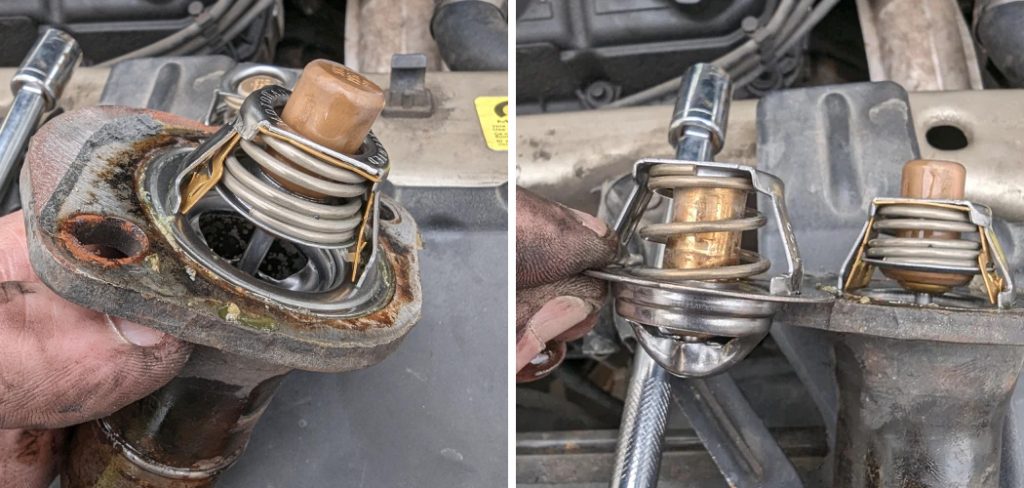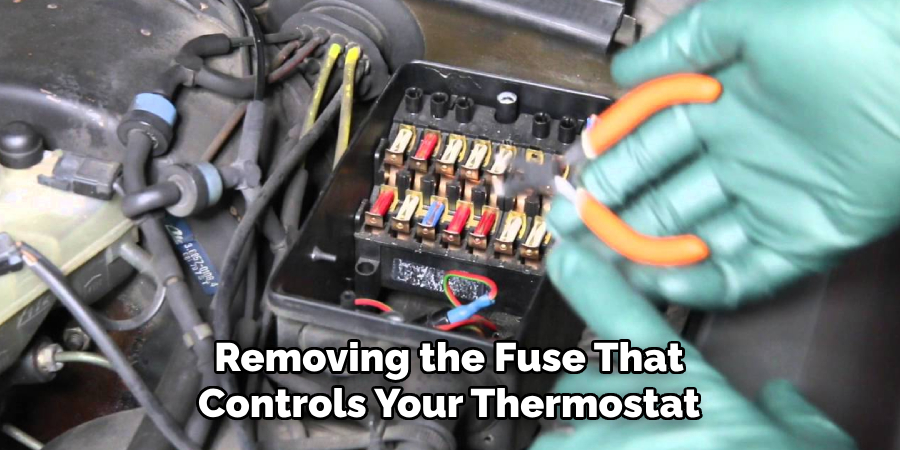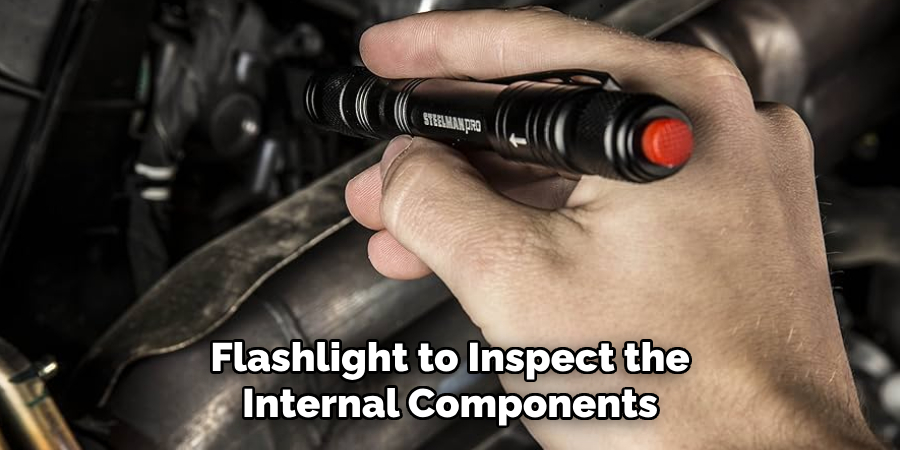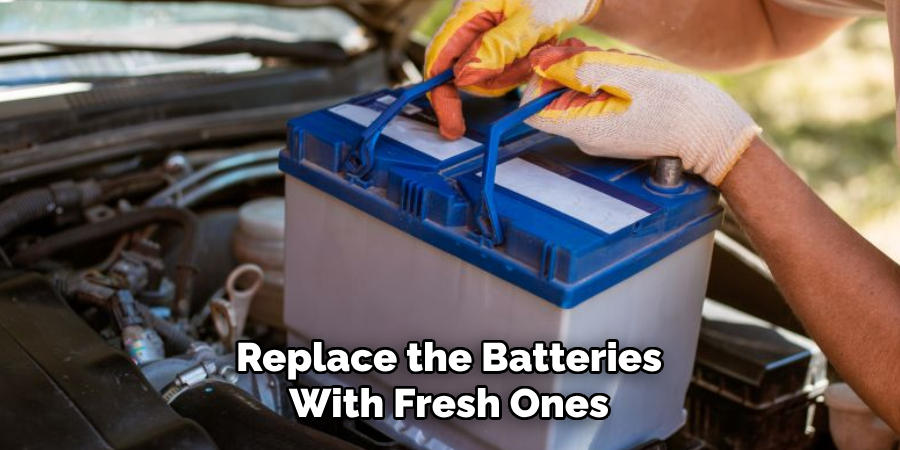Do you often find yourself frustrated with a thermostat that just won’t budge, no matter how many times you twist and turn the dial? Whether it’s an older model or a new one, getting your thermostat unstuck can be a frustrating process. But fear not, as we have some tips and tricks to help you solve this common issue.

In this blog post on how to get a thermostat unstuck, we’ll explore the reasons behind why thermostats get stuck and give you step-by-step instructions on how to fix them. Say goodbye to constantly adjusting your home’s temperature by following these simple solutions!
What Causes a Thermostat to Get Stuck?
Before we dive into the solutions, let’s first understand why your thermostat may be getting stuck. The most common reason is dust or dirt buildup in and around the dial or buttons of your thermostat. Over time, this can cause them to become sticky and difficult to move.
Another possible reason could be wear and tear on the internal mechanisms of the thermostat, especially in older models. Whatever the cause may be, it’s important to address the issue as soon as possible to avoid further damage and inconvenience.
Needed Tools
- Screwdriver (if Necessary)
- Soft Cloth
- Cleaning Solution (Mild Soap and Water or Rubbing Alcohol)
11 Step-by-step Instructions on How to Get a Thermostat Unstuck
Step 1: Turn Off the Power to Your Thermostat

Before attempting any fixes, make sure to turn off the power to your thermostat. This will prevent any electric shocks or further damage. You can do this by turning off the circuit breaker or removing the fuse that controls your thermostat. But if you’re unsure, it’s best to consult an electrician for assistance.
Step 2: Remove the Thermostat Cover
Using a screwdriver, carefully remove the cover of your thermostat. This will give you access to the internal components that may be causing the issue. It’s important to be gentle as you don’t want to damage any of the parts. The cover should come off easily, but if you encounter any resistance, stop and check to make sure you’ve removed all of the screws. You can also refer to the manufacturer’s manual for specific instructions.
Step 3: Clean Around the Dial or Buttons
Using a soft cloth and some cleaning solution (mild soap and water or rubbing alcohol), gently clean around the dial or buttons. Be careful not to use too much liquid as it may seep into the internal components and cause damage. Wipe away any dirt, dust, or grime that may be causing the stickiness. But if the dial or buttons are damaged, you may need to replace them.
Step 4: Try Turning the Dial or Pressing the Buttons
After cleaning, try turning the dial or pressing the buttons to see if they move more freely now. If the issue persists, move on to the next step. The cleaning may have not been enough to fix the problem completely. It’s also possible that the issue lies in other parts of the thermostat. But if the dial or buttons are now moving, you can put the cover back on and turn the power back on.
Step 5: Check for Obstructions
Sometimes, objects or debris may get lodged inside the thermostat, causing it to get stuck. Use a flashlight to inspect the internal components for any obstructions and gently remove them if found. Be careful not to damage any parts while doing so. If you find any major obstructions or damage, it’s best to call a professional for help.

Step 6: Adjust the Heat Anticipation Setting
If your thermostat has an anticipation setting, adjust it accordingly. This setting helps regulate the temperature by anticipating when the heating or cooling system will reach its desired temperature. If this setting is incorrect, it may cause your thermostat to get stuck. Refer to the manufacturer’s manual for instructions on how to adjust this setting.
Step 7: Check the Thermostat Sensor
Some thermostats have a sensor that detects the temperature in your home and relays it to the thermostat. If this sensor is dirty or damaged, it may cause your thermostat to malfunction. Use a soft cloth and some cleaning solution to gently clean the sensor. If it’s damaged, you may need to replace it. The sensor is usually located near the thermostat, but if you’re unsure, consult the manufacturer’s manual.
Step 8: Inspect the Wires
Carefully inspect the wires connected to your thermostat for any damage or loose connections. If you find any issues, call a professional electrician for assistance. Attempting to fix wiring issues on your own can be dangerous and cause further damage. You can also refer to the manufacturer’s manual for specific instructions on how to check and fix wiring issues.
Step 9: Replace the Batteries
If your thermostat is battery-powered, replace the batteries with fresh ones. Sometimes, low or dead batteries can cause your thermostat to get stuck. If this doesn’t solve the issue, move on to the next step. It’s always a good idea to have extra batteries on hand for situations like this. The manufacturer’s manual will provide instructions on how to replace the batteries.

Step 10: Check the Circuit Breaker
If your thermostat is hardwired, check the circuit breaker or fuse that controls it. Make sure it hasn’t tripped or blown out. If it has, you may need to replace it. But if everything looks okay, move on to the final step. It’s always best to have a professional electrician check the circuit breaker or fuse for you. The safety of your home and family should always come first.
Step 11: Call a Professional
If none of the above steps have helped fix your stuck thermostat, it’s time to call in a professional. There may be an underlying issue that requires a trained electrician or HVAC technician to address. Attempting any further fixes on your own may cause more damage and end up costing you more money in the long run. It’s always best to leave it to the experts when it comes to electrical or heating and cooling systems.
Following these steps on how to get a thermostat unstuck will help you get your thermostat unstuck and functioning properly again. Remember to always prioritize safety and seek professional help if needed. Regular maintenance and cleaning of your thermostat can also prevent it from getting stuck in the future. Keep your home comfortable and functioning efficiently with a properly working thermostat!
Frequently Asked Questions
Q: How Often Should I Clean My Thermostat?
A: It’s recommended to clean your thermostat at least once a year, or more frequently if you notice any dirt or grime buildup. Regular cleaning can help prevent it from getting stuck and prolong its lifespan.
Q: What Can Cause a Thermostat to Get Stuck?
A: There are several reasons why a thermostat may get stuck, including dirt or grime buildup, damaged components, obstructions, incorrect settings, and electrical issues. Regular maintenance and cleaning can help prevent these issues.
Q: Can I Fix a Stuck Thermostat on My Own?
A: In some cases, you may be able to fix a stuck thermostat on your own. But if you’re unsure or uncomfortable with handling electrical components, it’s best to seek professional help. Attempting to fix issues on your own can be dangerous and cause further damage. Safety should always be the top priority.
Q: How Do I Know If I Need to Replace My Thermostat?

A: If your thermostat is no longer functioning properly or is continually getting stuck, it may be time for a replacement. Consider consulting with a professional to determine the best course of action for your specific situation. Remember to always prioritize safety and seek professional help if needed.
Regular maintenance and cleaning of your thermostat can also prevent it from getting stuck in the future. Keep your home comfortable and functioning efficiently with a properly working thermostat!
Conclusion
In conclusion on how to get a thermostat unstuck, getting a stuck thermostat unstuck may seem like a daunting task, but with these easy tips and tricks, you can easily tackle the problem. Remember to always start with the simple solutions such as checking the power source and replacing batteries before moving on to more complicated methods.
Also, don’t be afraid to ask for help or consult a professional if you feel overwhelmed or unsure. By taking proper care of your thermostat and following proper maintenance procedures, you can prevent it from getting stuck in the future.
With a little patience and persistence, you can have your thermostat functioning smoothly once again. Keep in mind that regular maintenance is key to preventing any future issues and ensuring your home stays at the perfect temperature. So don’t wait any longer, use these techniques today and say goodbye to a stuck thermostat! Thank you for reading our blog post and we hope it has been helpful. Don’t forget to share your experiences and tips in the comments below!

